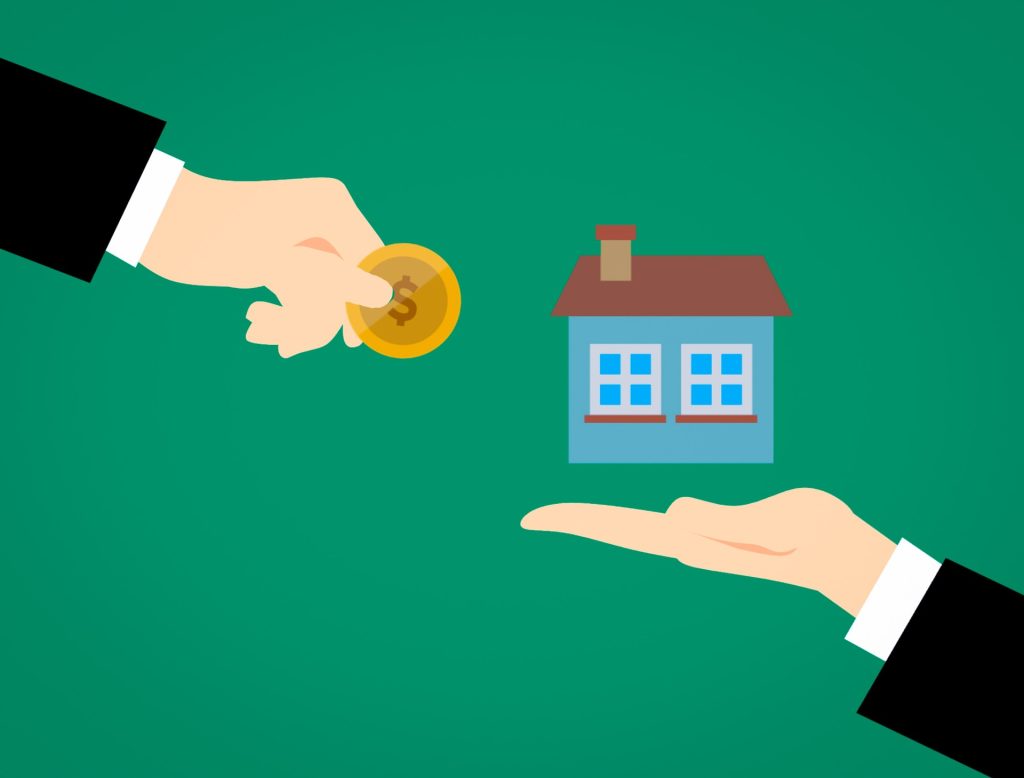Investment Property Mortgage Rates Vs. Primary Residence
September 28, 2022Can I Deduct Mortgage Interest On Rental Property?
September 29, 2022- Benefits of converting a Primary Residence to a Rental Property
- Converting Primary Residence to Rental Property Mortgage
- Does your mortgage change if you rent?
- Drawbacks to Converting your primary residence to an Investment Property
- Eight Steps to follow before turning a Home into a Rental
- How soon can you rent a house after buying it?
- Tax implications of renting out your primary residence
- What to Consider When Converting a Primary Residence into an Investment Property
- Why convert a Primary Residence to a Rental Property?
If you’re reading this, you may be planning to monetize your primary residence. Of course, there are many tremendous advantages to turning your primary home into a rental property, but there are a few things you should be aware of before you make the switch.
First, you must verify that you adhere to the guidelines set forth by your mortgage company before posting a “For Rent” sign in your yard. When purchasing a primary house, home purchasers get a better deal whether they choose a conventional loan or a government-backed FHA, USDA, or VA loan. When borrowers intend to reside in the property, they can lock in cheaper interest rates and smaller down payments. Additionally, government-backed loans like those offered by the USDA, VA, and FHA only apply to the purchase of principal residences. A second house or investment property is not eligible for financing.
Mortgage fraud is a severe issue you should avoid at all costs. Therefore, utilizing a primary residence loan and moving renters into the new house right away can be considered fraud. It’s best to be upfront and ask your lender about any guidelines and conditions that would be necessary if you want to rent out your current residence. You can ask one of our experts at Aurum and Sharpe for clarity on issues like this.
In many markets, demand for single-family rental homes is at an all-time high, and rents are rising by double digits in major American cities. Although many people opt to sell their current house before purchasing a new one, that decision may not be the best one for everyone. For some homeowners, converting an existing residence into a rental property could be more cost-effective than purchasing a new one.
In this post, we’ll go over the potential advantages of turning your primary residence into a rental property, how taxes operate, and the important actions you should take before becoming a landlord.

Why convert a Primary Residence to a Rental Property?
The first thing that probably springs to mind when you consider turning your primary house into a rental is cash flow. Whether you have previously invested in rental homes or not, it is another property that will generate additional income each month. Although it is undoubtedly the main benefit of conversion, there are other benefits. Before taking the plunge, you should also consider a few drawbacks.
What to Consider When Converting a Primary Residence into an Investment Property
Even if they intend to rent out the properties in the future, many buyers choose owner-occupied financing because the rates and down payment requirements are much cheaper. However, these buyers need to exercise caution, and the following are some things to keep in mind.
1. 12-Month Rule
In the loan documentation, each owner-occupant writes an affidavit stating that she would live in the home for a minimum of 12 months. However, in my experience, lenders almost never enforce this, as long as borrowers don’t engage in suspicious behavior (see below) or skip any payments. To be clear, I am not advising borrowers to deceive lenders; I am simply relaying what I have noticed.
2. Mailing Address Same as Property Address
Giving the servicer a mailing address that is distinct from the property address is one action that can raise suspicion. Why would a homeowner want her mail delivered to a different address? There are explanations, but borrowers must be prepared to provide them.
3. Larger, Nicer Current Address
The possession of other bigger and finer homes in better communities at the purchase is another item that can raise suspicions. Of course, there are always good reasons to relocate (shorter commute, closer proximity to family, changes in employment, etc.), but borrowers should be prepared to justify their decision in a letter to the underwriter. As my example above, they should be ready for additional inspection after closing.
4. “Repeat” Owner Occupants
A string of owner-occupant loans made repeatedly is another factor that might raise suspicions. After the financial crisis of 2008, we saw this a few times as some borrowers used owner-occupied financing with modest down payments to purchase several properties, with new loans appearing on their credit records around every six months. Borrowers might use letters of justification to defend each action, but only until underwriters became too suspicious.
5. How Long Must Buyers “Season” Owner-Occupied Financing Before Obtaining It Again?
Since lenders will be aware of the previous owner-occupied purchase due to MERS and credit reporting, buyers who previously used owner-occupied financing and wish to do so again must wait at least 12 months. However, by writing a compelling letter of justification that demonstrates the necessity for a new owner-occupied property, they may frequently get around the 12-month requirement. Job changes and family needs can be only two of the causes.
- How Long Must REFI BORROWERS “Season” Owner-Occupied Financing Before Obtaining It Again?
This and #5 is relatively similar, but I’m splitting them because refis have a little more latitude. The goal is to ensure that borrowers DO NOT sign a contract to acquire a new property as an owner-occupant; at the same time, an owner-occupied refinance is still being processed since this would indicate a desire to deceive either the refinancing or the purchasing lender. If the refinance closes first, however, the borrower may submit a letter of justification stating something along the lines of: “When I decided to refi, I had no intention of ever moving because I loved my darn house… but when I was driving around with my lovely wife on a sunny spring day, we just happened to run across our absolute dream house that we just had to have.” That typically works, too.
7. Jumbo Vs. Conforming Vs. FHA Vs. VA
Regarding owner-occupancy, jumbo lenders are typically harsher; they will examine files for problems much more carefully up front and are more likely to conduct occupancy checks after closing.

Benefits of converting a Primary Residence to a Rental Property
When a primary residence is turned into a rental property, a lot of things occur, and most of those changes are for the better. The top four advantages of owning a rental property are listed below, along with an explanation of how each one works.
Tax deductions
Property ownership is very similar to operating a business if you’ve ever done that. Even though there are numerous rental homes, we’ll assume you’re referring to a single-family home that serves as your principal dwelling.
You can deduct various expenses from your taxes to lower the tax you owe on that property.
These are typical expense deductions for a rental property:
- Advertising
- Auto and travel (must be mainly for business purposes)
- Cleaning and maintenance
- Commissions (paid for finding a new tenant or renewing a lease)
- Insurance (including homeowners insurance and landlord liability insurance)
- Legal and professional fees
- Management fees
- Mortgage interest
- Repairs
- Supplies
- Taxes (such as property tax)
- Utilities (sometimes paid directly by the landlord in small multifamily properties)
- Other owner expenses, such as dues and subscriptions or continuing education
Consider an example of a primary residence that has been converted into a rental property that brings in $24,000 in annual gross rental revenue. The income would be $6,000 if the total expenses, as mentioned earlier, were $18,000.
Depreciation Expense
Depreciating the property over a 27.5-year period is another advantage of converting a primary house into a rental. Depreciation is an expense allowance for the degradation or obsolescence of the property, according to IRS Publication 946.
The property’s cost basis must be established when the house is transformed from the main residence into a rental to claim the depreciation charge.
The purchase price of the residence plus any eligible upgrades (such as a new roof or the installation of extra square footage) or the residence’s fair market value at the time of conversion constitute the cost basis for depreciation.
The land is not included in depreciation; it only relates to the building. The foundation for depreciation would be $220,000, for instance, if a house had a conversion value of $250,000 and the lot had a value of $30,000.
Simply divide the basis by 27.5 years to determine the annual depreciation expense:
- $220,000 basis for depreciation / 27.5 years = $8,000 annual depreciation expense
When a primary residence is transformed into a rental property, the owner may exclude the depreciation expense from the rental revenue received to lower taxable income.
Using the aforementioned scenario, the owner would not be required to pay taxes on the rental property’s revenue if it generated $6,000 after tax deductions and $8,000 in annual depreciation costs:
- $6,000 income – $8,000 depreciation expense = <$2,000> loss for tax purposes.
When a situation like this occurs, an investor has a passive activity loss (PAL) which we’ll discuss next.
Passive Activity Loss (PAL)
In general, the IRS views actions related to rental real estate as passive, even when an investor materially participates, such as by visiting the property and meeting with the neighborhood property manager.
Unless an investor’s adjusted gross income is less than $100,000, under the PAL rules, an investor often cannot claim deductions exceeding the total passive income received from all passive income sources (such as other rental properties).
The loss of passive activity doesn’t, however, go to waste.
An investor may carry forward unused or disallowed passive losses to the following taxable year, according to IRS Topic No. 425 Passive Activities. For instance, any passive activity losses that were carried forward can be applied to offset passive activity profits if revenue from the rental property in the future is more than the yearly depreciation expense.
Avoid self-employment tax
Rental property income is typically free from self-employment tax, also referred to as FICA or payroll tax.
A self-employed person is typically expected to pay a 15.3% tax on any income generated for Social Security and Medicare. Therefore, the FICA tax owed for taxpayers earning $50,000 from self-employment would be $7,650. However, no self-employment tax is owed because rental property revenue is regarded as passive income rather than earned income. Therefore, no FICA tax would be owed if a real estate investor made the same $50,000 through rental units.

Drawbacks to Converting your primary residence to an Investment Property
Managing a rental takes work
Despite being quite advantageous, it is important to remember that maintaining a rental requires time and effort.
There are activities like:
- Looking for tenants
- Performing setup and shows
- Finalizing the lease
- Settling your new tenants
- Regular checks to keep your property in good shape and;
- Unplanned circumstances like repairs
Fortunately, adopting property management software may greatly simplify or semi-automate much of this job.
Even though managing a property requires labor, the software can significantly reduce that work.
You’ll need to budget for property-related expenses
While extremely lucrative if done correctly, managing a property necessitates having money put aside for property-related costs.
Even though the rent the property generates should more than cover all of these costs, if you don’t plan ahead for how to handle them, you can find yourself in a sticky situation.
It is especially true in the case of maintenance, which is frequently unexpected.

How soon can you rent a house after buying it?
It would be best if you resided there for an entire year to convert a primary residence you financed into an investment property. However, your lender might be willing to relax its occupancy restrictions and let you start renting out your house right now.
What happens, for instance, if you unexpectedly welcome a new family member and your present residence is insufficient for your needs? Or what if a job transfer chance arises that wasn’t a possibility when you purchased your house? What happens if you are deployed while serving in the military on active duty?
Your home may genuinely need to be rented out rather than sold. Fortunately, there are a few situations where renting out the house you acquired as your primary residence is perfectly fine. And for it to work, you shouldn’t have to refinance out of your primary residence loan.
Tax Implications of Renting out your Primary Residence
Being a landlord may make filing your income taxes with the IRS and your state’s revenue office more difficult. Your income from renting becomes taxable, and your yearly tax bill may be high because no employer withholds taxes from this income. You can deduct expenses like property taxes, insurance premiums, HOA dues, mortgage interest, the cost of repairs, and depreciation to reduce your tax liability. This necessitates accurate record keeping all year long.
The capital gains tax you’d have to pay when you sell the rental property may also depend on how well you keep your books. To ensure that your tax return is accurate, always consult your accountant. When the accountant is aware of tax benefits you were unaware of, their costs may pay for themselves.
Eight Steps to follow before turning a Home into a Rental
Some homeowners may find it wise to convert their primary residence into a rental, but it’s crucial to proceed carefully. Here are eight things to take before renting out a home:
- Think about the potential benefits and drawbacks, such as earning rental income and claiming tax deductions against having to manage the property as a landlord.
- Find out from the lender whether the current mortgage can be applied to a rental property rather than a primary dwelling.
- If the house needs to be refinanced as a rental property, look into your choices for investment property loans.
- Because some HOAs have restrictions, be sure the HOA will let the home be utilized as a rental.
- Inform your insurance agent that the house will be rented out and ask about extending the homeowners’ insurance policy’s coverage to include landlord liability insurance.
- Since certain cities and states require a landlord to collect and return a rental or sales tax, you should apply for any necessary permissions and licenses.
- Make any necessary repairs, set a reasonable market rate, advertise the property, screen potential tenants, sign a contract and start collecting rent to get the house ready to rent.
- Recognize the tax advantages of owning real estate as an investment and how to keep track of revenue and expenses on a rental property.
Does your mortgage change if you rent?
If your mortgage permits you to convert it to a rental property, you might not need to make any changes. Your lender will determine whether or not this is permitted under your mortgage. So, inquire with them to learn what your mortgage permits. Ask your lender about refinancing an investment property loan if it isn’t permitted under the terms of your mortgage or go elsewhere.
Final thoughts
There are a lot of potential advantages and disadvantages to turning your primary residence into a rental property. Keeping track of revenue and spending to take advantage of all the tax advantages a rental property offers is one of the major issues new real estate owners encounter. Even if your home no longer meets your needs, you might not want to sell it, given that property prices and rent are growing in many cities.
Most homeowners can start investing in real estate by renting their primary homes.
Before renting your house, be sure you understand what you’re getting into. Then, you can speak with one of our experts at Aurum and Sharpe to get all the information you need before getting started.
Mortgage Rates
DSCR Mortgage: 7.375%
Commercial Mortgage: 7.5%
Single family, Condo Investment Property: 7.375%
Portfolio of Residential Homes: 7.5%
Calculate Your Monthly Payment
Mortgage Information
Monthly Payment
Principal and Interest: $0
Total Monthly Payment: $0


